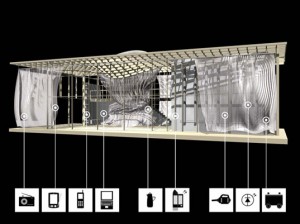 Tweet SCS Energy, of Concord, Mass., wants to build a new coal plant in Linden, NJ.
Tweet SCS Energy, of Concord, Mass., wants to build a new coal plant in Linden, NJ.
 According to Kate Galbraith, reporting in the NY Times, “A Plan for U. S. Emissions to Be Buried Under Sea“, 90% of the carbon dioxide will be captured, compressed, pumped thru a 24 inch diameter pipe, approximately 70 miles south-east, past Staten Island, New York, and Middlesex, Monmouth, and Ocean Counties in New Jersey, to a point 25 or 30 miles east of Atlantic City, New Jersey,and injected by a well drilled a mile beneath the sandstone floor of the Atlantic Ocean. The Atlantic is about a half mile deep at that point.
According to Kate Galbraith, reporting in the NY Times, “A Plan for U. S. Emissions to Be Buried Under Sea“, 90% of the carbon dioxide will be captured, compressed, pumped thru a 24 inch diameter pipe, approximately 70 miles south-east, past Staten Island, New York, and Middlesex, Monmouth, and Ocean Counties in New Jersey, to a point 25 or 30 miles east of Atlantic City, New Jersey,and injected by a well drilled a mile beneath the sandstone floor of the Atlantic Ocean. The Atlantic is about a half mile deep at that point.
Gailbraith reports that the plant could cost $5 billion if completed on time and on budget. And it will need $100 million a year in Federal Government subsidies, which amounts to another $4 billion over the plant’s 40 year operating life span.
The carbon sequestration is projected to use 25% to 40% of the energy released from burning coal, so the 750 megawatt plant will be a 450 to 562.5 mw plant. That’s $16 Billion to $20 Billion per gigawatt or $16 to $20 per watt, depending on the overhead costs, of sequestering the carbon.
Solar is roughly $6.50 per watt with no subsidies, no fuel costs, very low maintenance, and no loss in transmission. Offshore Wind is $3.00 per watt, with no fuel costs.
Continue reading →



 According to Kate Galbraith, reporting in the
According to Kate Galbraith, reporting in the 



